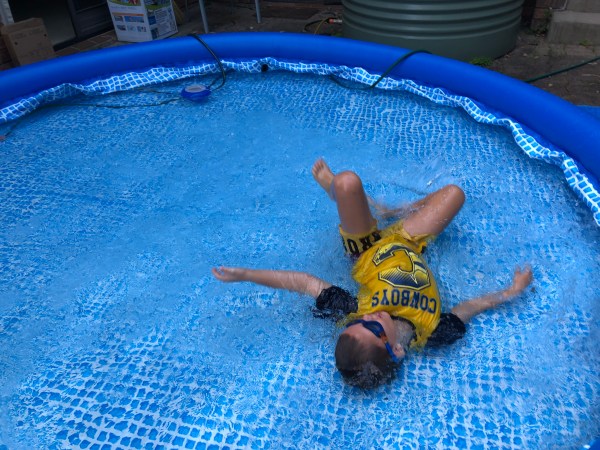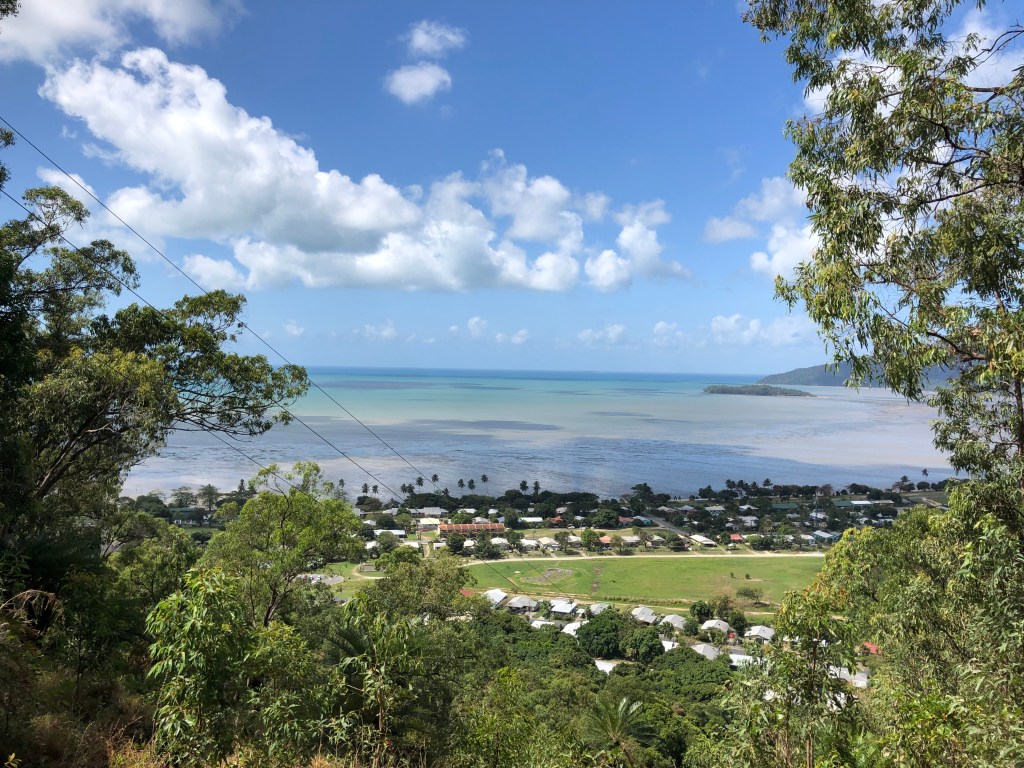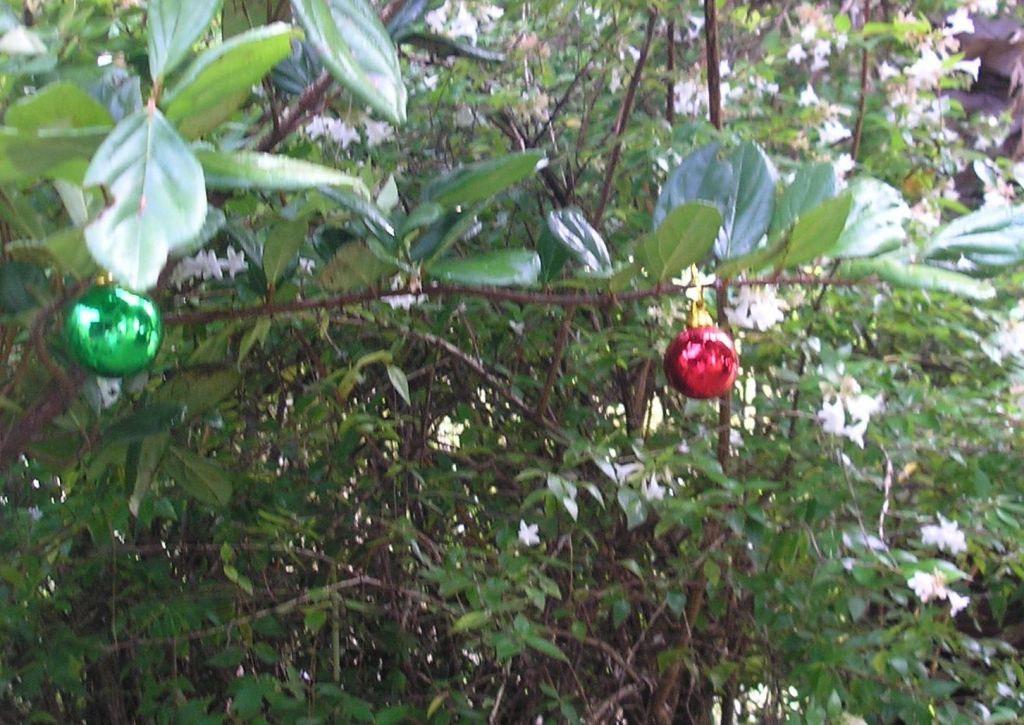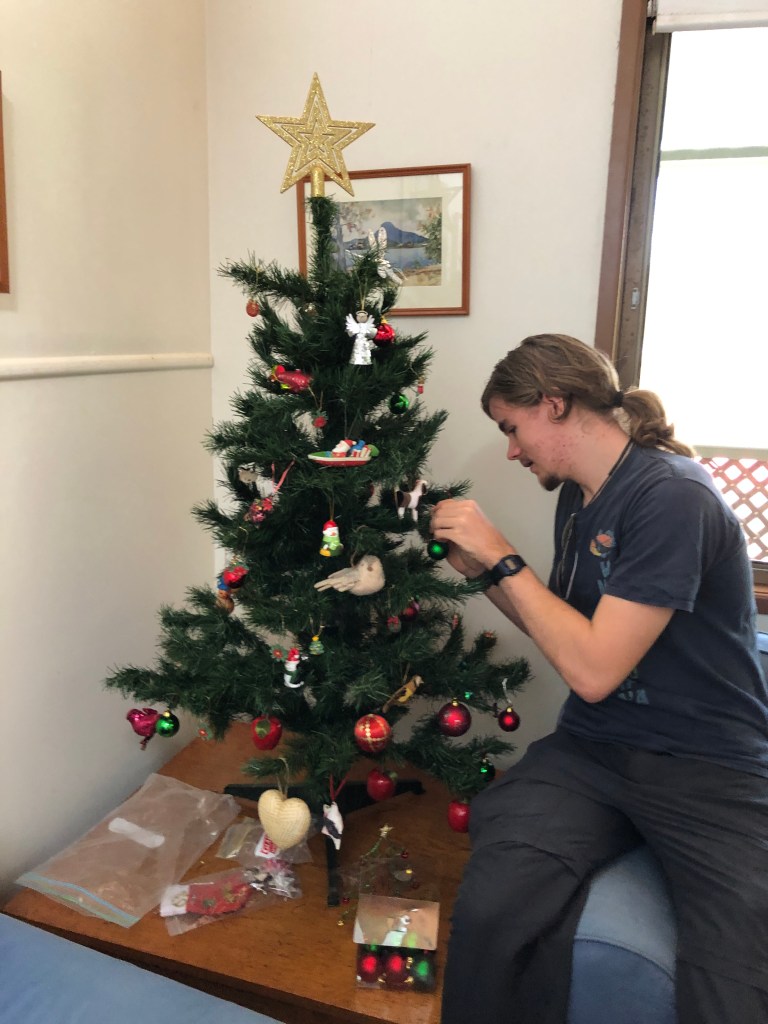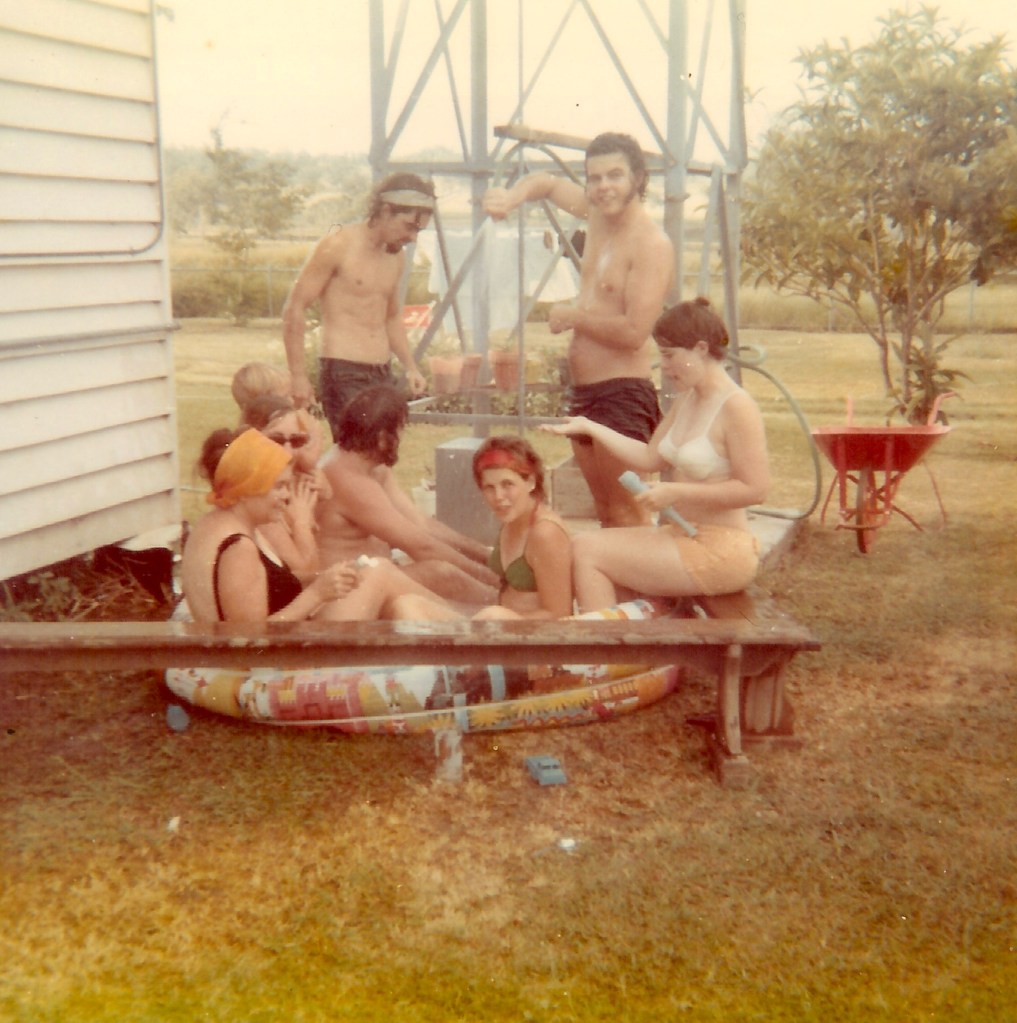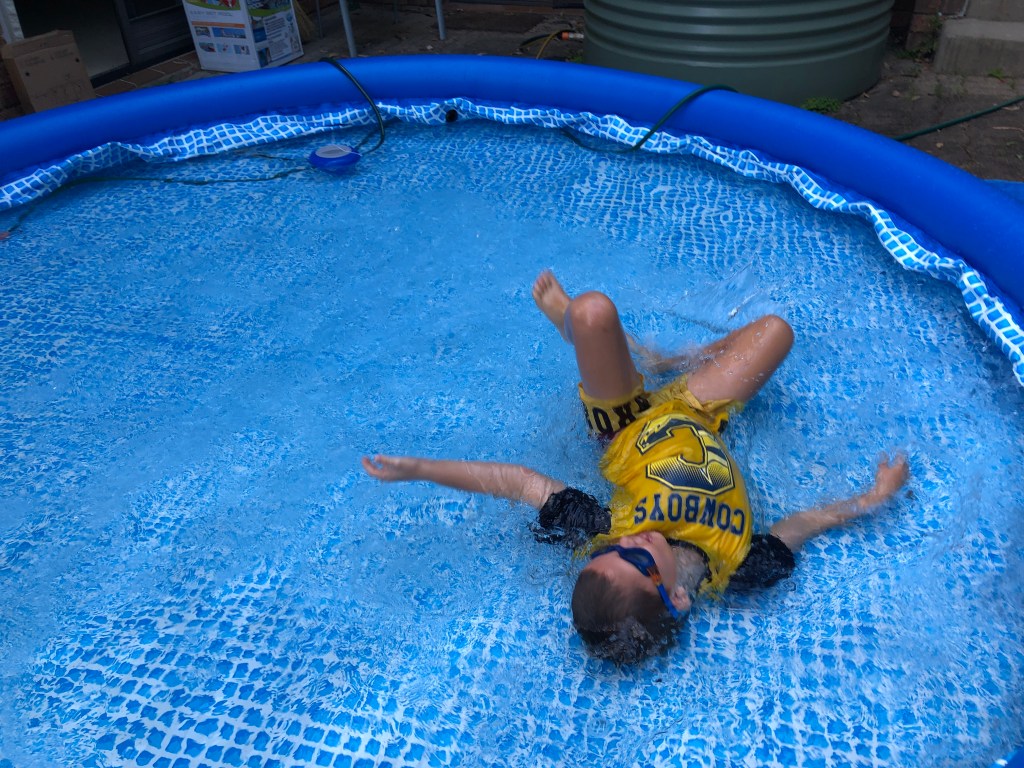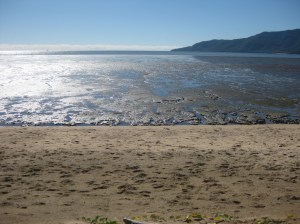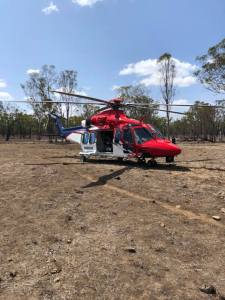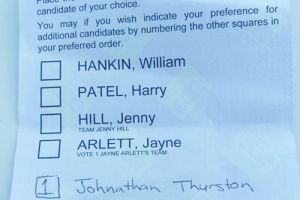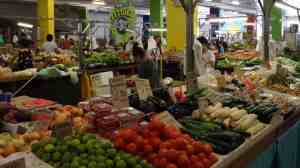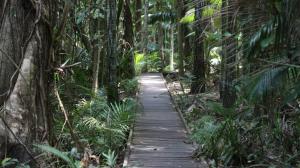We were slow to put up a Christmas tree that year. Matt, seven years old, got anxious. Maybe we weren’t going to have a tree? He couldn’t bear the thought.
At the time we were living in Yarrabah Aboriginal Community, in a house was just a hundred metres from the edge of the Coral Sea, at the bottom of a steep hillside covered in tropical forest. Following the coconut palm-lined beach, a dirt track led around to the Point, a popular fishing spot.
Matt went under the house and found the old blockbuster, heavier and blunter than an axe and nearly as big as he was. He dragged the blockbuster down the dirt road past our house and out along Point Road to a spot where casuarina pines were growing; then he set about chopping one down.
Half an hour later, Matt arrived back at our front door, accompanied by a local man who had been walking along the track with his family on the way back from fishing. He had been amused to find little Mattie trying to chop down a tree twice as tall as he was, and kindly chopped it down for him. Then he brought Matt, the blockbuster and the tree home to our house.
It was a surprise to me, because I thought Matt had been playing under the house the whole time.
We always have some kind of Christmas tree. If we’re away from home I’ll find something green to hang a few baubles on and put presents under. An artificial plant in a holiday apartment at Maroochydore (holiday apartments always have some kind of artificial greenery, it seems), shrubs outside our cabin the year we spent Christmas in a caravan park at Dorrigo, N.S.W.
One year I found a dead tree branch, sprayed it white, planted it in a basket full of rocks and hung tinsel and decorations on it. I felt smug about my creativeness, but my kids weren’t impressed. Kids have their standards about what a Christmas tree should look like.
Living in Woodford, west of Caboolture and not far from the sprawling Caribbean pine plantations of the Glasshouse Mountains area, before Christmas we would drive down a dirt track in the pine forest until we found a suitable-sized tree, one that had seeded beside the track. Those exotic species sprout everywhere, even in people’s roof guttering and plant pots.
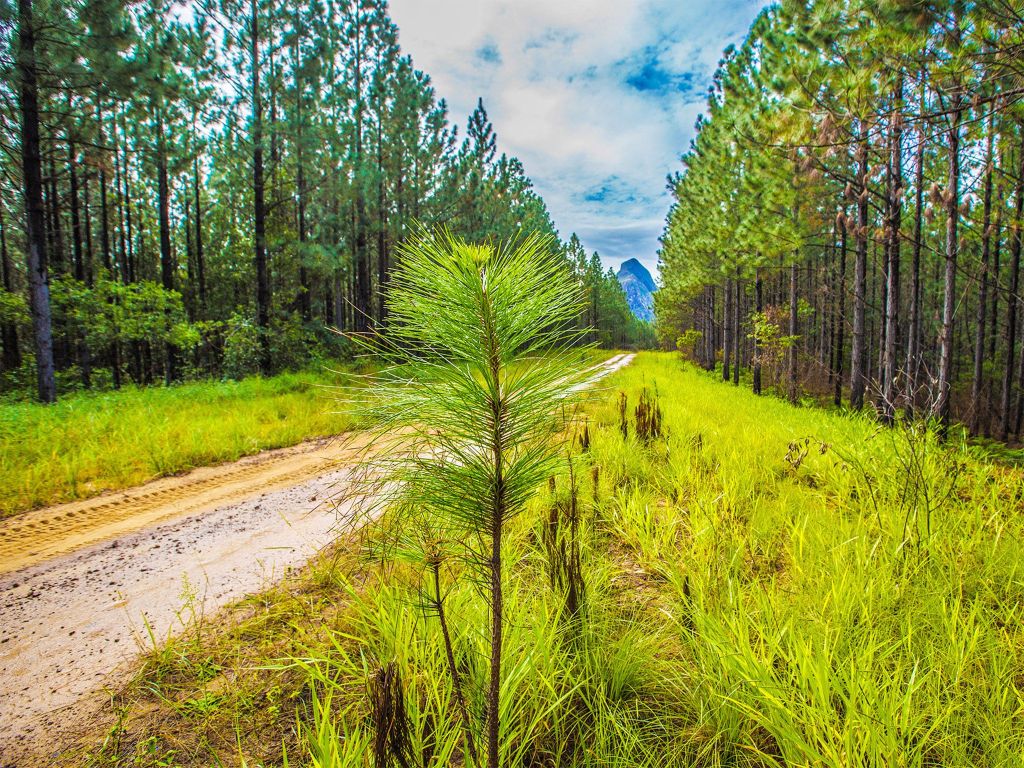
We would chop the tree down and bring it home for a Christmas tree. The kids didn’t like that much, either – Caribbean pines smell good, but they’re not lush and thick, and they don’t have a traditional Christmas tree shape.
Eventually I got tired of chopping down trees, and to the scorn and outrage of the family, I bought a plastic one. We’ve now been using that same plastic tree for thirty years and three generations.
Sometimes in Queensland we have a fairly mild Christmas, as we did in Brisbane in 2020: 28C and cloudy. Occasionally we get a wet Christmas. It’s safest, though, wherever you are in the state, to plan for heat. That Christmas evening in Dorrigo we ate under a fine, cool mist; but we arrived back in Brisbane a couple of days later to find that candles we’d left on the sideboard had melted and drooped in the heat.
One memorable 25 December in Jandowae, on the Northern Darling Downs, when I was a teenager, the temperature must have been in the mid-40s. My mother was trying to cook a traditional Christmas roast dinner in our wood-burning stove, but it wasn’t drawing properly and she couldn’t get the oven hot enough. My brother climbed on to the corrugated iron roof in the blazing sunshine to try and unblock the chimney. The whole kitchen was like an oven. The plastic tea towel rack melted and sagged and the tea towels slid off on to the floor.
Mum cooked a hot roast dinner every Christmas, roast veges and all, then a hot Christmas pudding. That year in Jandowae she said, “Never again.” It was cold meats and salads from then on; but she still did the pudding.
The further you go from the coast in Queensland, the hotter it’s likely to be – well into the 40s in such places as Quilpie and Thargomindah; but usually it’s a dry heat. The coastal hinterland can deliver something special: high temperatures plus humidity. That’s what we got one year at Rosevale, south west of Ipswich.
It was the Christmas of 1972, and Con and I had a full house. Family camped in the field next door, devoured by mosquitoes every night; and the back yard toilet had to be emptied more often than usual.
That was Con’s regular job. He would dig a hole in the paddock beyond the back fence and bury the contents of the toilet pan. On Christmas Eve he conscripted my brother John to help him (the same one who’d gotten on the roof on a previous Christmas to clear the chimney – a useful bloke).
The pan was full almost to the brim. “Tread carefully”, Con warned him as they carried it across the yard, one on either handle. “We don’t want it to spill.”
“I was never more sure-footed in my life,” said John.
On Christmas Day, desperate from the heat, we pumped up the kids’ little inflatable pool next to the tank stand and all got in it, under the hose: three generations squeezed in together.
That Christmas Day was reportedly Brisbane’s hottest on record: 39C. As the hinterland is regularly hotter in summer by several degrees, Rosevale would have reached 42C at least.
At the State Library of Queensland, a year or so ago, there was a display of old photos of Queenslanders doing typical Queenslander things. Among them, to my delight, was a photo of a Beaudesert family on that same Christmas Day in 1972, trying to keep cool the same way we were at Rosevale, just an hour’s drive away.

These days as a family we’re spoilt at Christmas, with a cold lunch of ham and salads, fans and air-conditioning, and even indoor, flushing toilets.
We still have an inflatable back-yard pool, though – and the old plastic Christmas Tree. Some traditions should never die.
